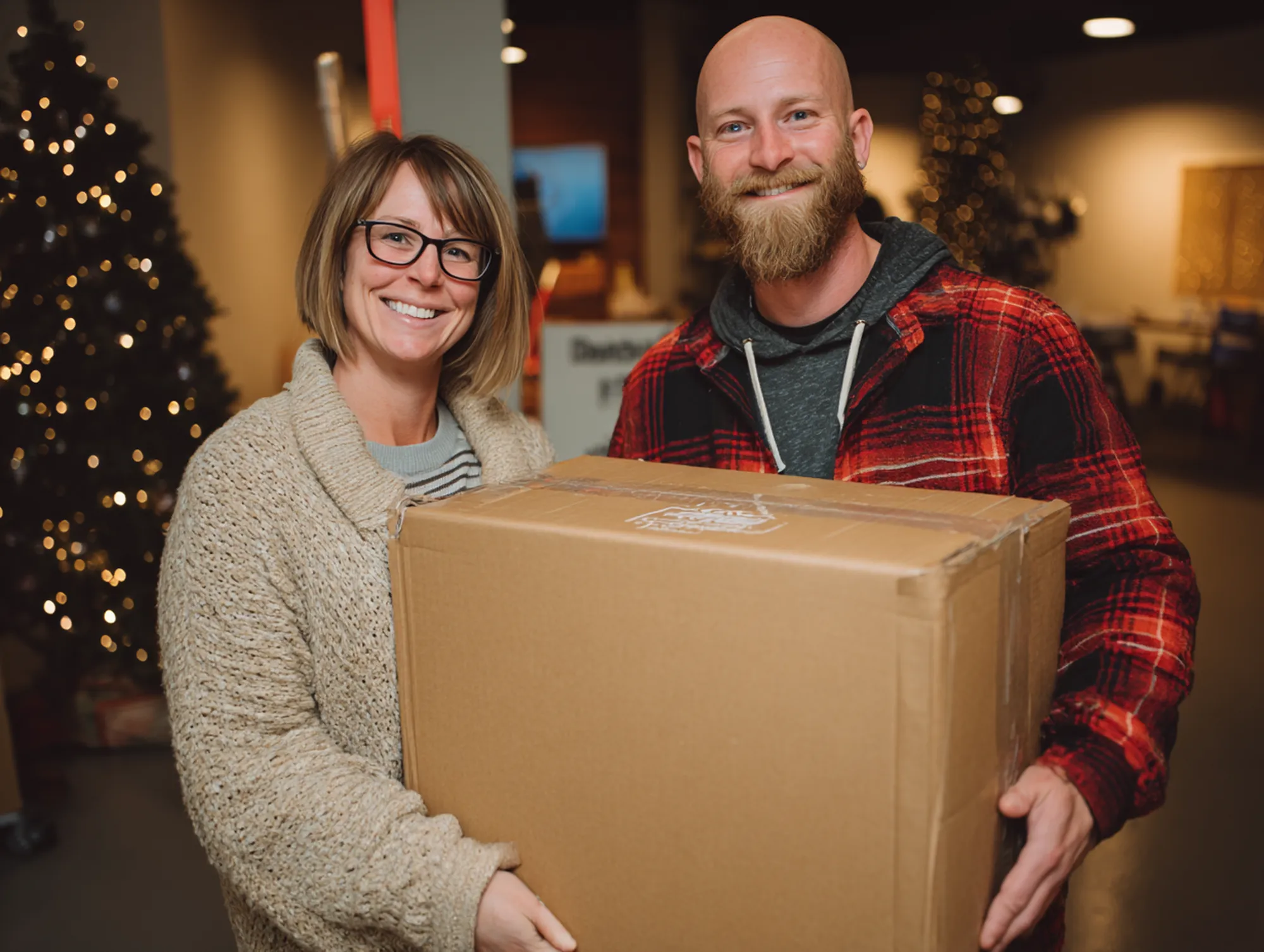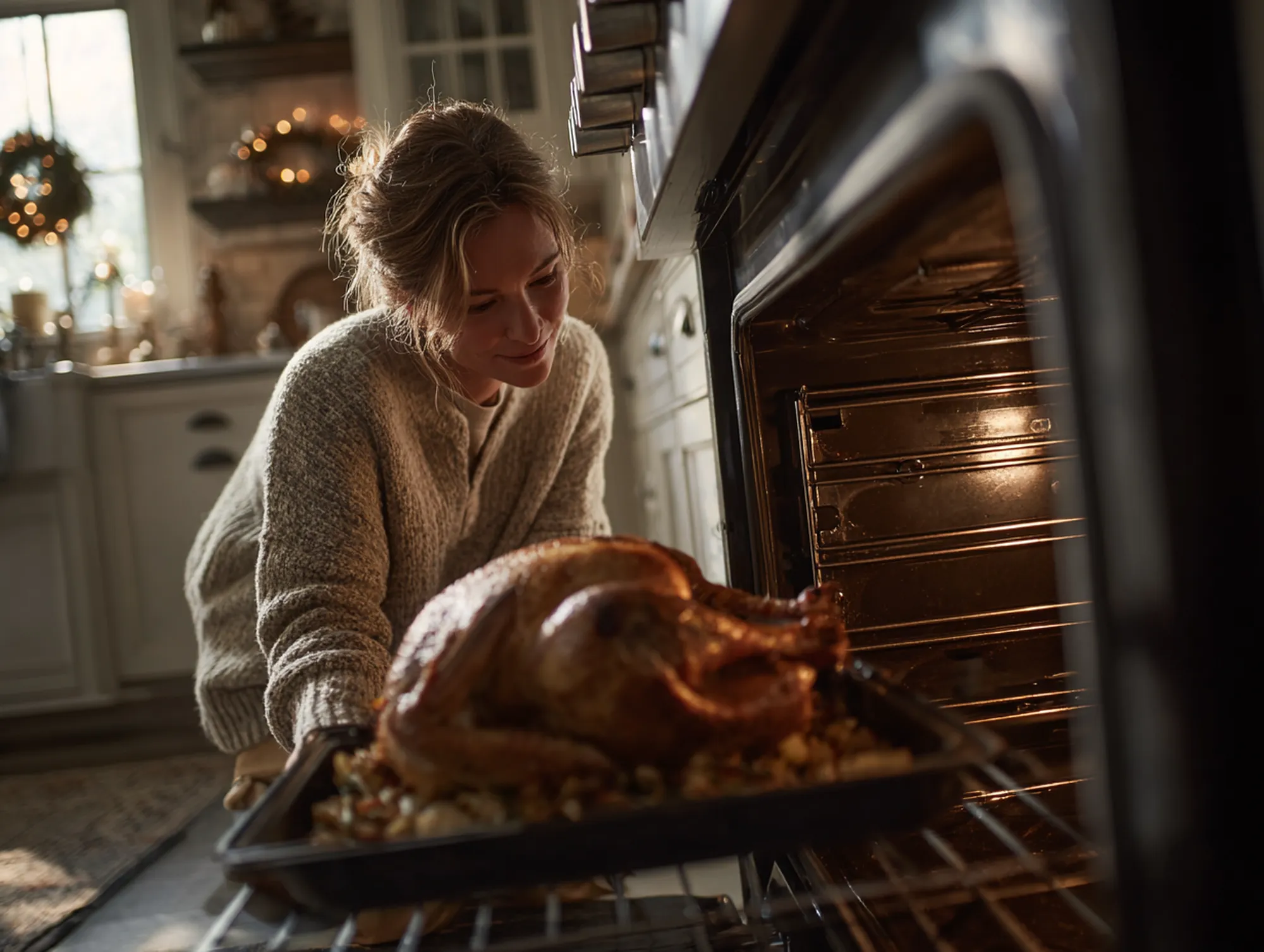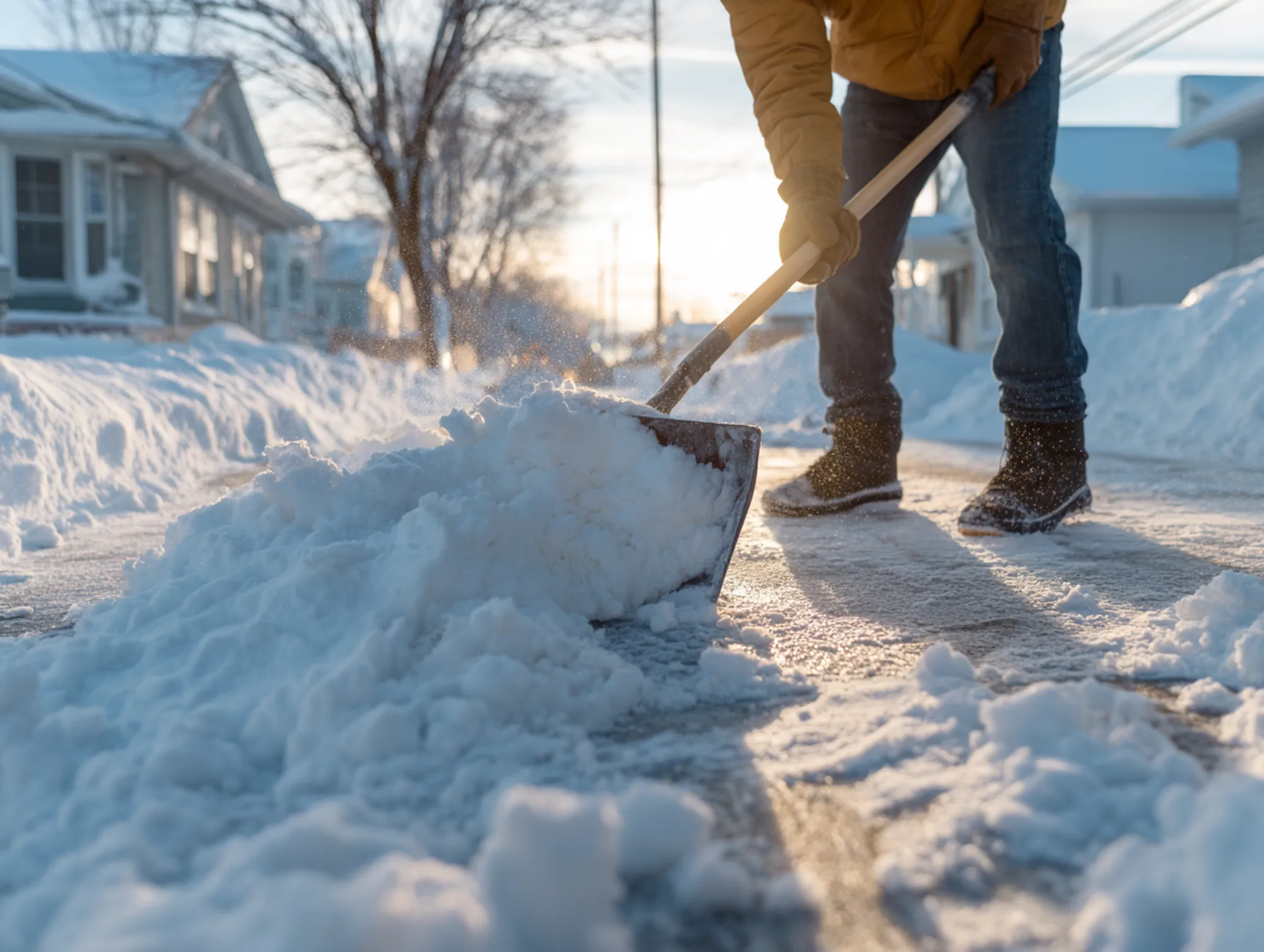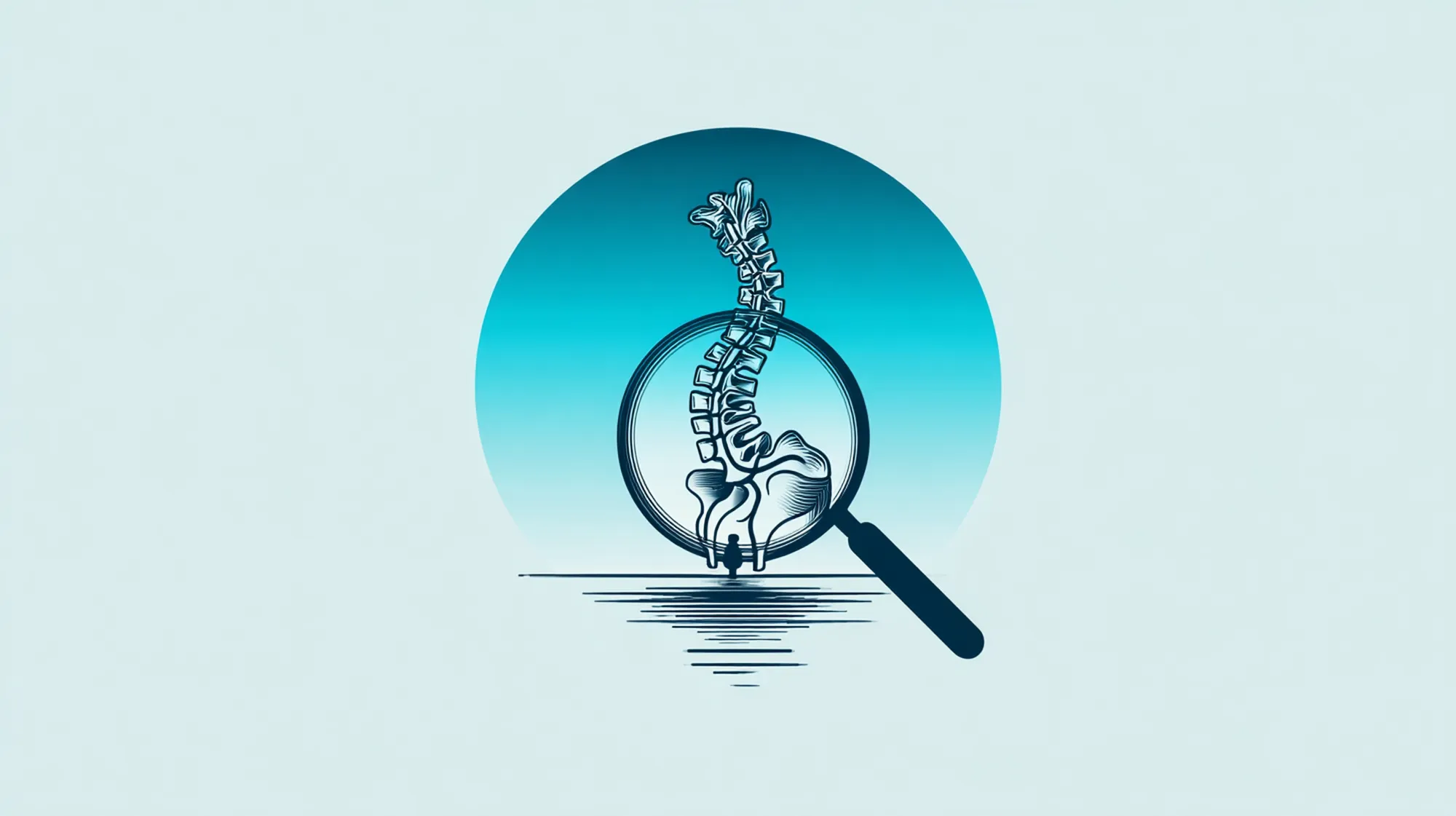The holidays are a joyful time, but they can also be hard on your back. From lugging heavy gift boxes to hanging decorations and shoveling snow, holiday chores put extra strain on our bodies[1]. In fact, roughly 15,000 people ended up in emergency rooms last holiday season due to decorating-related injuries[2]. The good news is that a little know-how can go a long way toward back injury prevention. Below we share practical tips to lift and move safely during holiday prep so you can enjoy the season pain-free.

Holiday Lifting Do’s and Don’ts (At a Glance)
DO:
- Lift with your legs, not your back. Bend at the knees and keep your back straight when picking up anything heavy[3].
- Hold items close to your body. Keeping the load close to your torso reduces pressure on your spine[4].
- Plan the path and clear obstacles. Check that your route is free of tripping hazards before you carry a bulky item[5].
- Ask for help with heavy or awkward loads. Teamwork (or using a dolly/handcart) can prevent a serious strain[6][7].
- Take stretch breaks. If you’re doing repetitive tasks (hanging ornaments, shoveling, etc.), pause every 20 minutes to gently stretch and reset your posture[8].
DON’T:
- Don’t bend at the waist to lift. This common mistake can “wreck your back” when hefting a heavy turkey or box[9]. Squatting is much safer.
- Don’t twist your spine while carrying. Turn with your feet instead of twisting your torso, especially when holding something heavy[10].
- Don’t overfill or rush. Cramming all decorations in one giant box (or doing all tasks in one go) invites injury. Break up loads and chores to manageable sizes.
- Don’t climb on shaky chairs. Use a stable ladder (with someone spotting you) for high places – falls are a top cause of holiday injuries[2].
- Don’t ignore pain. If your back starts hurting, stop what you’re doing. Pushing through severe discomfort can turn a minor tweak into a major injury.
Keep these quick tips in mind, and read on for step-by-step safe techniques for specific holiday tasks – from lifting that monster turkey to shoveling the season’s first snow.

Lifting Heavy Items (Turkeys, Gifts & Tree) Safely
Big holiday items can be deceptively heavy. A frozen turkey can easily weigh 20+ pounds, and a large plastic bin of décor or a Christmas tree can be even bulkier. Here’s how to handle those without hurting your back:
- Use proper form every time. Approach the object close to your body, plant your feet shoulder-width apart, and squat down by bending your knees. Keep your back straight, head up, and drive through your leg muscles as you lift[3]. This technique protects your lower back from overload.
- Hold the load close. Whether it’s a box of ornaments or a hefty shopping bag, clutch it near your abdomen/chest – not out at arm’s length. Holding weight close to your center of gravity reduces strain on your back and shoulders[4]. If the item is large, hug it in tight.
- No twisting or sudden jerking. Pivot with your feet if you need to turn; do not twist your spine while carrying weight[10]. Sudden, awkward twists (like turning to toss a heavy bag into the trunk) are a recipe for disc injuries[11]. Instead, step to face the direction you want to go.
- Watch that turkey**!** Lifting a roasting pan out of the oven is tricky because the oven door forces you to reach forward. If it’s a big bird, get a helper so each of you can grab a handle and lift together from either side of the oven door[12]. If you’re alone, remove the rack so you can get as close as possible, squat low, and lift in one smooth motion (consider sliding the pan onto a counter first rather than hoisting it straight out). Pro tip: Warm up your legs with a few body-weight squats beforehand, and engage your core (tighten your belly muscles) as you lift to help stabilize your spine[13][14].
- Mind the Christmas tree. Deciding to haul a fresh-cut tree from a local farm outside Chillicothe? Bring a friend or family member along. A 6- or 7-foot tree is definitely a two-person carry for most people. Squat to grasp the trunk together, lift with legs, and carry it close to both of your bodies. Plan your path in advance[5] so you’re not tripping over stumps or porch steps while holding a giant tree! The same goes for unloading the tree from your vehicle – communicate and lift in sync. Once indoors, use a hand truck for large trees if available, or take off branches to lighten the load.
- Use tools for heavy gifts or luggage. Don’t hesitate to use a handcart, furniture dolly, or even a strong rolling suitcase to move really heavy presents or suitcases of visiting relatives[7]. Also, lift smart from car to house: slide heavy items out of the trunk instead of jumping up to grab them, and carry smaller loads multiple times rather than one huge load. A few extra trips are worth saving your back.
Remember, if it feels too heavy, it probably is. Swallow your pride and ask for help. It’s much better to recruit a neighbor or family member to help lift Grandma’s antique dining table than to spend your Christmas Eve nursing a back spasm on the couch.

Hauling & Decorating Without the Pain
Between digging boxes out of the attic and climbing up to deck the halls, decorating can contort our bodies in unusual ways. Here’s how to keep it festive without feeling it in your back:
- Be careful on the stairs or attic ladder. Carrying storage bins down the attic ladder or stairs can be perilous. First, never try to carry too much at once – falling while holding an overloaded box is a common holiday accident. Instead, pass boxes down to a partner if possible, or use a pulley/rope to lower them. If you must go solo, keep one hand free to hold the rail or ladder. Go slowly, and ensure each step is clear and well-lit. It may help to wear a headlamp or have a good light in an attic so you’re not straining and bending in awkward darkness.
- Use a stable ladder (and a buddy). When hanging lights or high ornaments, don’t balance on tiptoes or on a wobbly chair. Use a proper step stool or ladder that’s rated for your weight, and make sure it’s on level ground[15]. For outdoor lights or roof work, have someone hold the base of the ladder. Nearly half of decorating injuries involve falls[2], so this is critical. Keep your hips between the ladder rails and don’t overreach to the side – climb down and reposition instead.
- Alternate sides and motions. Repetitive reaching in one direction (like always stretching your right arm to hang garland) can lead to muscle fatigue on one side[16]. Switch arms or sides regularly – e.g., hang some ornaments with your left hand, then some with your right. This balances the workload on your back, shoulders, and neck[17]. Also, vary your tasks: instead of hanging all lights in one marathon session, do lights for a bit, then perhaps wrap gifts sitting down, then come back to hanging decorations. Mixing it up gives each muscle group a rest.
- Take stretch breaks during decorating. It’s easy to get “in the zone” and spend an hour straight untangling lights or arranging lawn inflatables. But don’t stay in one bent-over or overhead position too long. Every 15–20 minutes, stand upright, gently arch your back, roll your shoulders, and stretch[8]. This resets your posture and wards off stiffness. Have some water, too – staying hydrated keeps your muscles happy.
- Keep your wrists and shoulders happy. Small things count: if you’re up on a ladder fiddling with an ornament hook, keep your wrists in a neutral position (not cocked at a weird angle)[18] to avoid tendon strain. And if you’re holding something overhead, remember your shoulders will fatigue quickly. Limit time spent with arms raised – for example, hang a dozen ornaments, then take a break or do the next dozen from a different angle so your arms can come down for a moment[19]. You can even do a quick shoulder roll or doorway chest stretch mid-task.
- Use smart lifting for décor, too. Just like with heavy gifts, apply the squat-and-lift technique to boxes of decorations. If you have a big bin of holiday lights, consider splitting the contents into two smaller boxes so each is lighter. And avoid bending and twisting to grab things out of big bins; instead, set the box on a table or chair so it’s waist-height while you unpack it, sparing your back.
- Delegate and share the fun. Don’t play holiday hero and do all the decorating alone. Involve the family: have the kids help with the easy-to-reach spots or carrying lighter items. If you live alone, invite a friend for a decorating afternoon – you’ll not only get help lifting that heavy wreath, but you’ll make it an enjoyable event (bribe with cookies!). As a bonus, sharing the work prevents the muscle fatigue and back strain that comes from one person overdoing it[20].
By pacing yourself and using these tactics, you can transform your home into a winter wonderland without waking up the next day with a sore back or cricked neck.

Outdoor Chores: Protect Your Back in the Cold
Outdoor holiday prep – like chopping firewood and shoveling snow – combines heavy lifting with cold weather, a tricky combo. Here’s how to handle winter tasks safely:
- Warm up first (especially in cold weather). In Chillicothe and across North Missouri, holiday prep often means chilly temps. Cold muscles are tight muscles, which are more prone to injury[21]. Before you tackle the woodpile or driveway, do a quick warm-up indoors: try some jumping jacks, a few gentle twists, or a short walk to get blood flowing. Even a 5–10 minute warm-up can loosen muscles and reduce the risk of strains and spasms[22]. Keep yourself warm outside with layers, including gloves and a hat – staying warm will help keep your back limber[21].
- Snow shoveling – think small and stable. Shoveling sends many folks to the chiropractor each winter because it’s basically heavy lifting plus twisting, over and over. To shovel safely:
- Push, don’t lift, if you can. Use the shovel to push snow to the side rather than lift it, whenever possible[23]. If you must lift, scoop small amounts (don’t fill the shovel to overflowing)[23].
- Squat and spread your stance. Just like lifting a box, bend your knees and keep your back straight when picking up a shovel full of snow[24]. A slight squat and wider stance gives you better leverage and less strain on the low back[25].
- Avoid the twist toss. Never twist your torso to throw snow over your shoulder – that combined motion can herniate a disc in a heartbeat[11]. Instead, turn your whole body to dump the snow in front of you or off to the side, or walk to where you want to drop it[26].
- Take breaks and switch sides. Shoveling is repetitive. Every 10-15 minutes, stand up and gently stretch backward, or go inside for a few minutes to warm up. And try switching which hand is lower on the shovel periodically, to balance the muscle use.
- Use ergonomic tools if available. A shovel with a curved handle or adjustable length can reduce bending. Also, wear boots with good traction – the last thing you need is a slip on ice while lifting snow[27]. Falls can injure your back just as badly.
- Chopping or carrying wood – use your legs and tools. Nothing beats a cozy fire, but splitting and hauling logs is hard labor. To save your back:
- Lift logs correctly. Squat to pick up or set down logs, keeping them close to your body (are you sensing a theme?). Avoid stooping at the waist to grab rounds off the ground – that’s a heavy deadlift on your poor spine. If a log is large, split it into smaller chunks before moving it[28]. It’s better to make more trips with lighter pieces than one risky heave-ho with a giant log.
- Use equipment to your advantage. A wheeled cart or wheelbarrow is your best friend for moving multiple logs[28]. Load it with moderate weight (don’t overfill until it’s impossible to push) and let the wheels carry the burden across the yard. If using a wood splitter, always follow safety guidelines – many finger and back injuries happen by trying to stabilize wood with your hands, so keep hands clear and let the machine do the work (wear tight gloves so they don’t get caught on anything!).
- Mind your core and posture. When swinging an axe or even a maul, engage your core muscles to stabilize your spine with each swing[29]. Stand with feet shoulder-width for balance. Avoid twisting your back on the downswing – face the log head-on. If using a chainsaw, hold it close to your body rather than with outstretched arms[30], and take breaks; holding a 10–20 lb saw at arms’ length for a long time can strain your shoulders and mid-back.
- Pace yourself. Chopping wood is usually not an everyday activity, so your body will fatigue faster than you think. Don’t try to split the whole cord in one afternoon. Spread it out, and if you feel your form getting sloppy (you start bending more, or your back twinges), stop and rest. It’s better to resume tomorrow than to push through and pay for it later.
Whether clearing the driveway or stocking the woodpile, listen to your body. These tasks are workouts in themselves. Staying mindful of technique and taking your time will keep your back in one piece for the rest of the holidays.

If You Do “Tweak” Your Back…
Despite all precautions, accidents happen. You might lift something awkwardly or wake up with a stiff back after an intense day of decorating. Don’t ignore it – address it early so a small tweak doesn’t turn into a long-term issue.
Here’s what to do if you feel back pain after holiday chores:
- Stop and rest (but not too long). At the moment of injury or pain, carefully put down what you’re carrying and take a break. Rest a few hours if needed, but avoid staying immobile for days[31]. Prolonged bed rest can cause your back to stiffen up more. Instead, after an initial rest, try some gentle movement – short, easy walks or mild stretches – to keep blood flowing.
- Ice, then heat. For a sudden acute strain (muscle pull), applying an ice pack in the first 24-48 hours can reduce inflammation. Wrap ice in a cloth and apply 15-20 minutes at a time (never directly on skin). After a couple of days, warm heat (like a heating pad or warm bath) can soothe tight muscles. If you’re unsure, a good rule of thumb is ice for a fresh injury, heat for stiffness – or alternate both. And of course, listen to what feels best on your body.
- Gentle stretching and movement. Once the sharp pain subsides, do easy stretches like pulling knees to chest, gentle trunk rotations, or the supine spinal twist (lying on your back, let knees fall side to side) to relieve tension. Keep it gentle – you should feel a mild stretch, not pain. The goal is to maintain flexibility without aggravating the injury.
- Consider over-the-counter relief. If approved for you, NSAIDs (like ibuprofen) or a muscle rub/patch might alleviate pain and reduce swelling in the short term. Just use as directed, and remember these aren’t a cure – they’re just for comfort while you heal.
- See a professional if needed. If pain is severe, radiating (e.g. down your leg), or not improving after a few days, seek medical advice. Chiropractic care in particular can be a holiday lifesaver. Chiropractors can gently adjust misalignments and tight joints, often providing quick relief for acute back strains[32]. At The Well-House Chiropractic, we frequently help patients who overdid it with holiday prep to realign their spine and relax muscle spasms so they can get back to enjoying the season. A prompt chiropractic adjustment can relieve pain, improve your mobility, and even help prevent further injury by restoring proper alignment[32]. Think of it as hitting the “reset” button on your back.
Most importantly, don’t tough it out in silence. Taking care of a minor back issue now – with rest, stretching, or a quick visit to your chiropractor – can save you from missing out on holiday fun later. We want you upright and comfortable when it’s time to open presents or dance at New Year’s, not nursing a bad back.

Enjoy a Pain-Free Holiday Season
With a little care and mindfulness, back injury prevention during the holidays is absolutely possible. To recap: lift smart, move mindfully, and listen to your body. Use those strong leg muscles, ask for help when needed, and take breaks during marathon decorating or snow shoveling sessions. Your spine will thank you!
If you do feel a twinge, address it early – even a quick chiropractic check-in can make a world of difference in keeping you mobile and cheerful. Our team at The Well-House Chiropractic is here to support you through the season, whether with tips or hands-on care.
By following these safe lifting moves and healthy habits, you can focus on what matters most: enjoying the holiday spirit with family and friends. Stay safe, lift wisely, and have a happy, back-pain-free holiday! 🎄💪🎁
Now Scheduling

FAQs
How can I lift heavy boxes or gifts without hurting my back?
Start by sizing up the load – if it seems too heavy, get help or split it. When lifting, bend your knees and squat rather than bending at your waist[3]. Keep the box close to your body (at belly or chest level) as you stand up[4]. Avoid any twisting motions while carrying it – turn with your feet instead[10]. Also, clear your path beforehand so you don’t trip. Using this proper form every time will greatly reduce the risk of back strain.
What should I do if I feel a sharp pain in my back while shoveling snow or chopping wood?
Stop immediately and don’t “push through” a sharp pain. Move carefully to a place where you can rest. Apply an ice pack right away to minimize any swelling (15-20 minutes on, with a cloth as a barrier). Once indoors, gently stretch your back if you’re able – for example, a slight knee-to-chest stretch – but avoid heavy activity for at least the rest of the day. If pain persists or is severe, consider seeing a chiropractor or doctor. Often, a quick chiropractic adjustment can help relieve acute strain from shoveling[32]. And next time, remember to use smaller shovel loads and avoid twisting when tossing snow to prevent injury[11].
Are there any tools or equipment that can help me lift and move things more safely during holiday prep?
Absolutely! Moving tools can save your back. For example, use a dolly or handcart for heavy boxes or large gifts[7] – let the wheels do the work. When bringing bins down from an attic, a sturdy step stool or ladder is safer than reaching or jumping[15]. An ergonomic snow shovel (with a curved handle) can reduce bending while shoveling. Even simple sliders or furniture moving straps can help if you need to shift heavy furniture for holiday guests. And don’t forget proper attire – wear supportive shoes or boots with good grip, whether you’re moving stuff in the house or outdoors, to prevent slips that could injure your back[33].
How can a chiropractor help if I injure my back during holiday preparations?
A chiropractor can be your secret weapon in recovering quickly[34]. They will assess your spine and muscles to find any misalignments or tight areas that resulted from the injury. Through gentle adjustments, a chiropractor can realign your spine, reduce nerve irritation, and relax muscle spasms, often providing immediate pain relief[32]. Chiropractors can also advise you on stretches and strengthening exercises to help the area heal and prevent re-injury. Another benefit: regular chiropractic care during the holiday season can keep your back in top shape proactively, improving your flexibility and resilience so you’re less likely to get hurt in the first place[35]. In short, if you “tweak” your back, a chiropractor will not only help relieve the acute pain but also get you back to your routines faster and stronger.
Sources:
- MOTION PT Group – “Holiday Hustle, Injury-Free: Tips Safe Lifting and Injury Prevention” (Nov. 18, 2024). Offers advice from physical therapists on proper lifting techniques (lift with legs, avoid twisting) and overuse injury prevention during holiday activities[36][10].
- BioSpine Institute – “Tips to Avoid Back Pain During Thanksgiving” (Nov. 2021). Emphasizes the common mistake of bending incorrectly when lifting a turkey and the importance of lifting with your knees to save your back[9].
- Bird Chiropractic – “Tips to Avoid Thanksgiving Back Pain” (Nov. 20, 2018). Notes the challenges of lifting a heavy turkey out of the oven and recommends getting help (one person on each side of the pan) due to the awkward oven-door angle[37].
- Cleveland Clinic – “Shoveling Snow? Tips to Prevent Back Injury or Pain” (Mar. 14, 2024). Provides medical guidance on safe snow shoveling: warm up first, squat with legs, avoid twisting to throw snow (which can herniate discs), and push snow rather than lifting when possible[11][26].
- Sumner Specialized Physical Therapy – “Top Four Ways to Reduce Injuries While Cutting Wood for the Winter” (Oct. 12, 2021). Discusses the risk of low back disc injuries from lifting heavy logs and advises cutting logs into smaller pieces, using carts to carry wood, and bracing the core muscles before lifting to protect the spine[28].
- Huntington Chiropractic A&I Clinic – “Chiropractic Care During the Holidays: Relieving Back Pain and Staying Healthy” (Dec. 3, 2024). Highlights several holiday back-safety tips (lifting with knees, taking breaks, safe decorating) and explains how chiropractic adjustments can relieve acute pain, improve mobility, and prevent injuries during the holiday season[3][32].
- U.S. Consumer Product Safety Commission – “Holiday Safety” (Press Release, Nov. 2023). Reports statistics on holiday-related injuries, including ~14,900 ER-treated injuries from holiday decorating in one season, and that about 160 decorating injuries occur per day during the holiday period – nearly half from falls[2].
[1] [4] [5] [6] [7] [8] [10] [15] [16] [18] [19] [36] Holiday Hustle, Injury-Free: Tips Safe Lifting and Injury Prevention | MOTION PT Group
https://motionptg.com/blog/holiday-hustle-injury-free-tips-safe-lifting-and-injury-prevention/
https://www.cpsc.gov/Safety-Education/Safety-Education-Centers/Holiday-Safety
[3] [17] [21] [32] [35] Chiropractic Care During the Holidays: Relieving Back Pain and Staying Healthy | Huntington Chiropractic Accident & Injury Clinic
[9] Tips to avoid back pain during Thanksgiving | Florida – BioSpine
https://www.biospine.com/tips-to-avoid-back-pain-during-thanksgiving/
[11] [22] [25] [26] [27] [31] Shoveling Snow? Tips To Prevent Back Injury or Pain
https://health.clevelandclinic.org/preventing-back-pain-from-shoveling-snow
[12] [20] [33] [37] Tips to Avoid Thanksgiving Back Pain — Bird Chiropractic – Best Local Voorhees Township Chiropractor
https://www.birdchiro.com/blog/tips-to-avoid-thanksgiving-back-pain
[13] [14] Avoiding “Turkey-Back” This Holiday Season | The Orthopaedic Therapy Clinic
https://orthophysio.com/avoiding-turkey-back-this-holiday-season/
[23] 5 Tips for Safe Snow Shovelling to Prevent Back Pain
https://cornerstonephysio.com/resources/safe-snow-shovelling-to-prevent-back-pain/
[24] Prevent Snow Shoveling-Snowblowing Injuries – OrthoInfo – AAOS
https://orthoinfo.aaos.org/en/staying-healthy/prevent-snow-shoveling-and-snowblowing-injuries/
[28] [29] [30] Top Four Ways to Reduce Injuries While Cutting Wood for the Winter — Sumner Specialized Physical Therapy
https://sumnerpt.com/blog/woodinjuries
[34] 5 Tips to Avoid Back Pain and Stress This Holiday Season
https://drmmalone.com/5-tips-to-avoid-back-pain-and-stress-this-holiday-season/

